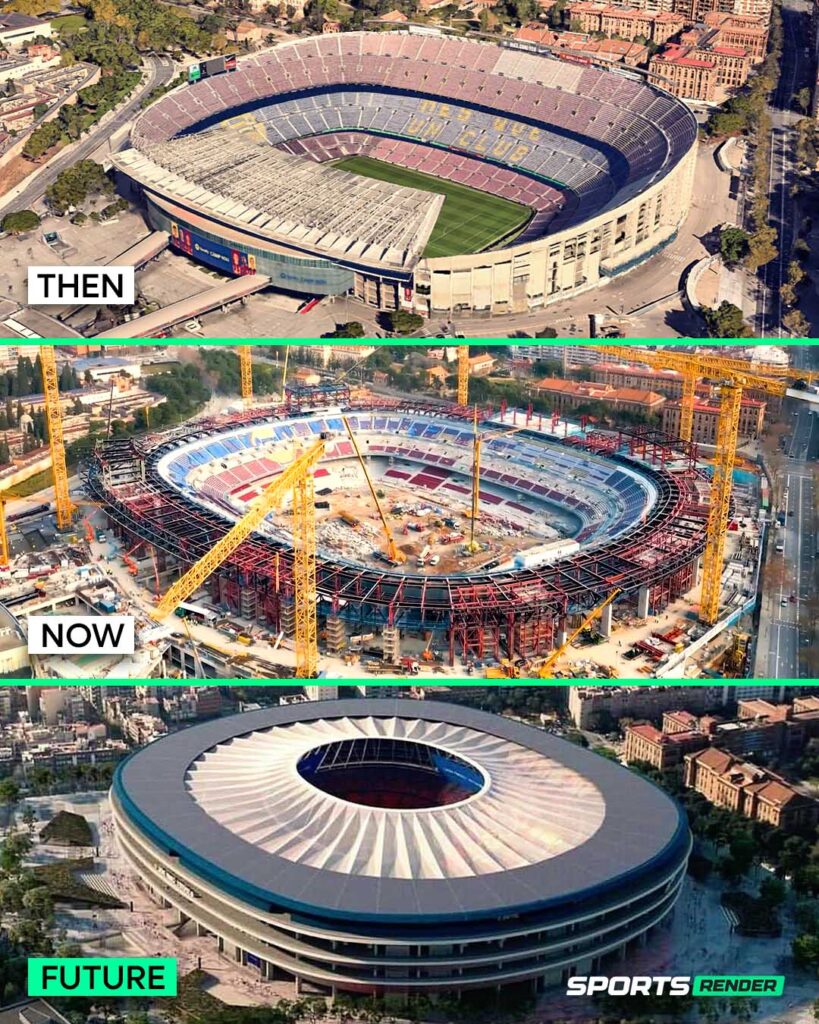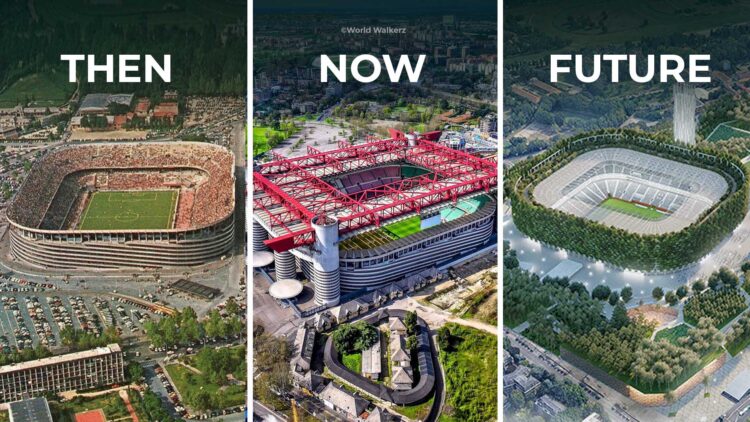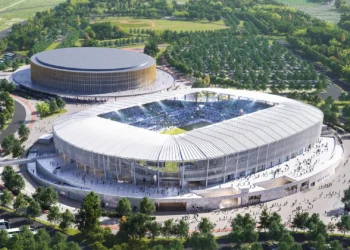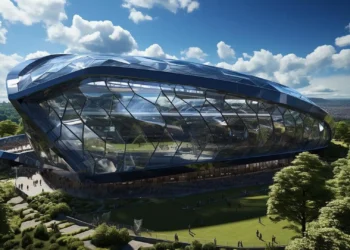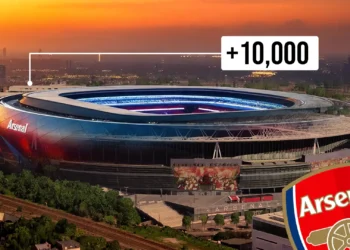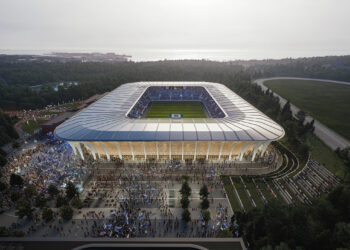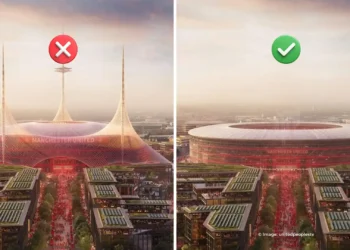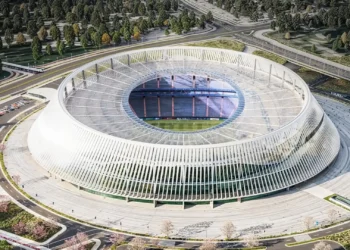Stadiums are monuments of culture, architecture and innovation, reflecting the spirit of the times in which they were built. But how have stadiums changed from yesterday to today and what can we expect from the stadiums of the future?
Yesterday’s Stadiums: Symbols of Massiveness and Tradition
In past decades, stadiums were built mainly with concrete and metal structures, focusing more on capacity than on the comfort of spectators. Some of the most iconic examples are:
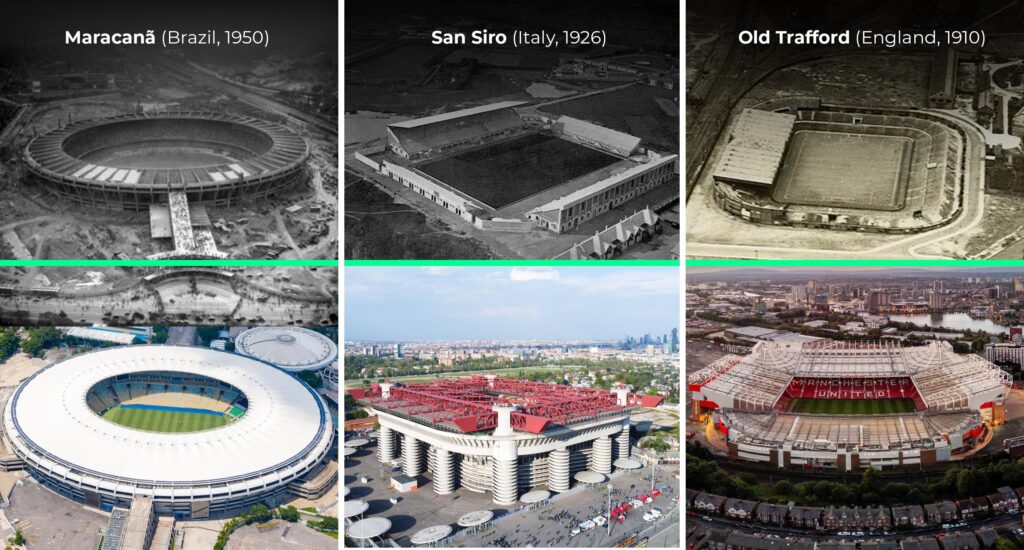
Maracanã (Brazil, 1950) – One of the most legendary stadiums, built for the 1950 World Cup, once had a capacity of over 200,000 spectators.
San Siro (Italy, 1926) – One of the cathedrals of football, known for its unique spiral staircase.
Old Trafford (England, 1910) – The historic home of Manchester United, which has retained its charm over the years.

These stadiums had a clear purpose: to gather as many fans as possible and create a fiery atmosphere, but often comfort and technology left much to be desired.
Today’s Stadiums: Comfort, Technology and Spectacle
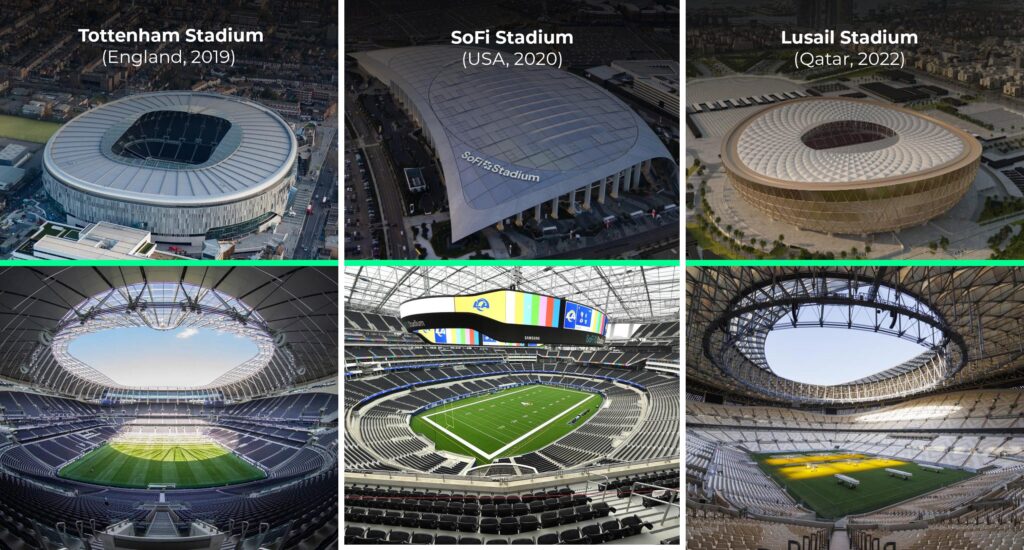
Today, stadiums are no longer just places to watch a match, but true entertainment centers with advanced technology, luxurious facilities and interactive experiences for fans. Some of the most modern stadiums of recent times include:
Tottenham Hotspur Stadium (England, 2019) – A revolutionary stadium with a moving pitch and a beer system that is filled from below.
SoFi Stadium (USA, 2020) – An architectural marvel that includes a giant 360-degree screen and a futuristic transparent roof.
Lusail Stadium (Qatar, 2022) – An extraordinary stadium built for the 2022 World Cup, with a design inspired by Arabian lanterns.
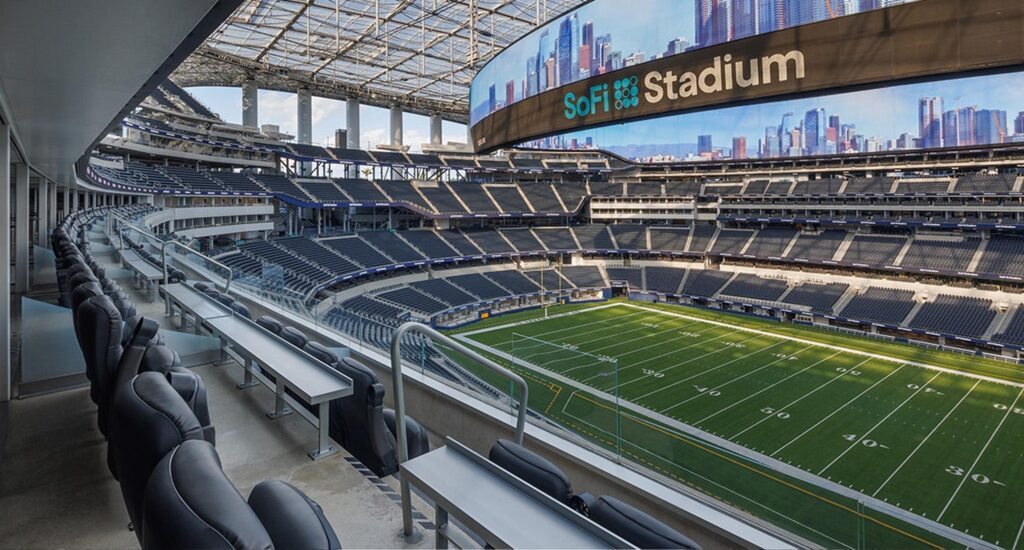
These stadiums focus on improving the fan experience through fast Wi-Fi, giant screens, exclusive restaurants and VIP areas. Technology has also been integrated into the pitch with systems such as VAR and smart lighting.
Stadiums of the Future: Fantasy Becoming Reality
But what awaits us in the future? The stadiums of the coming decades are expected to revolutionize the way we experience sports, based on extraordinary innovations such as:
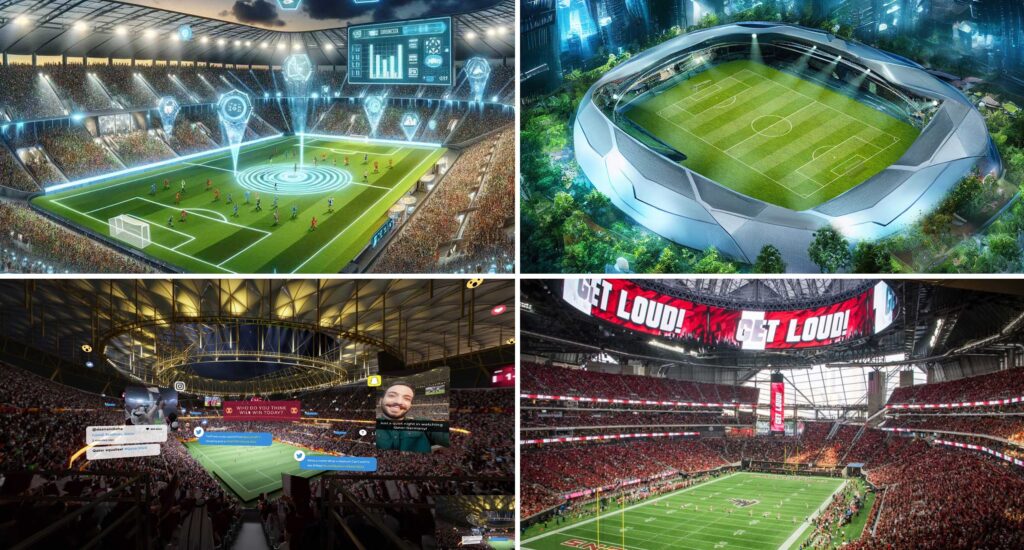
Smart Stadiums – They will use AI and advanced sensors to analyze the emotions of fans and adapt the experience according to their needs.
Ecological Architecture – The stadiums will be 100% sustainable, with solar energy, recyclable materials and advanced water management systems.
Virtual Experiences – Fans who cannot physically be at the stadium will be able to experience the match in virtual reality (VR) from the comfort of their own homes.
Shape-shifting Stands – Stadiums with flexible capacities that can be modified according to events, changing the size and structure of the stands.
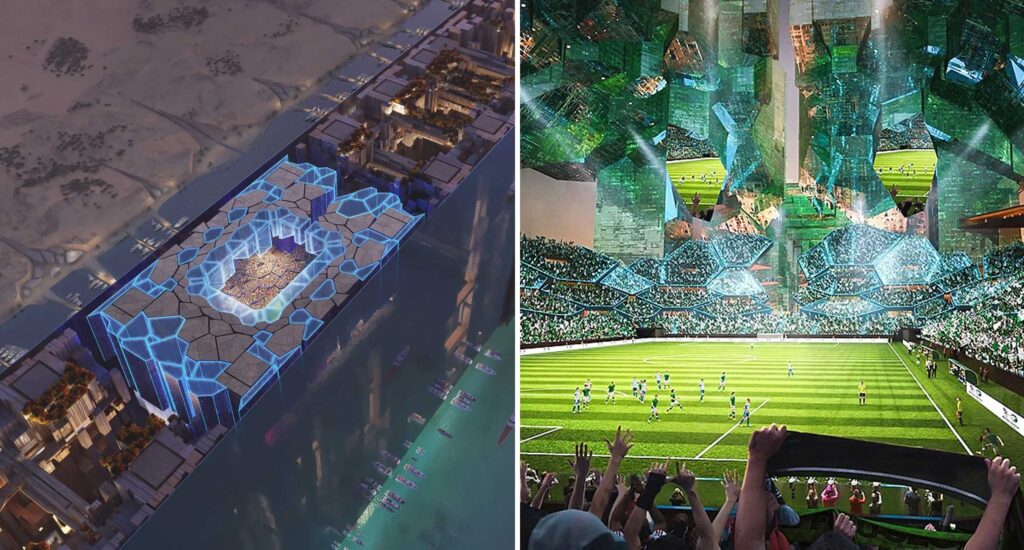
A prime example is the The Line Stadium project in Saudi Arabia, which aims to be the most technologically advanced stadium in history, integrating all these innovations.
The Future Is Here
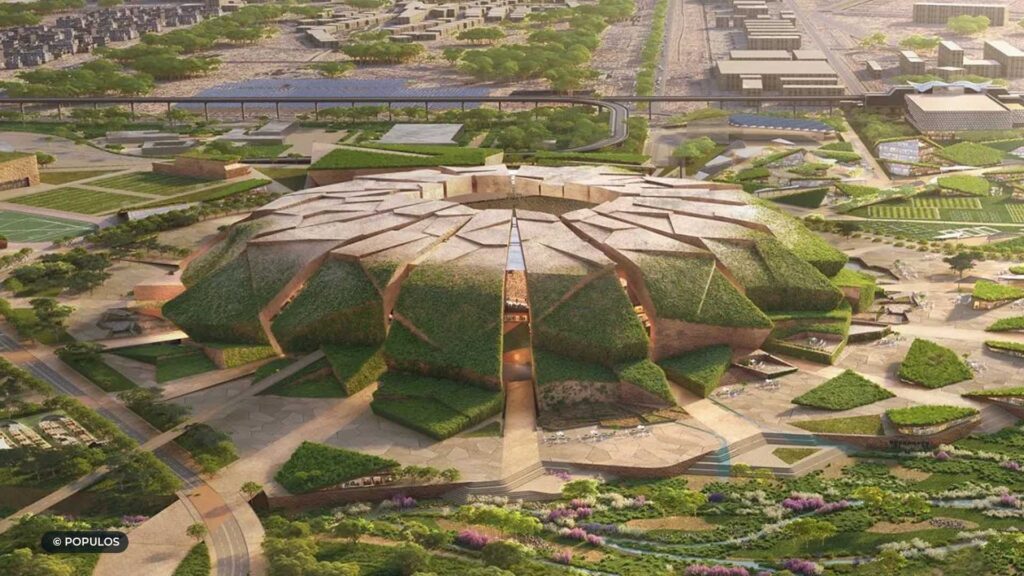
From historic stadiums built with cold concrete, to modern arenas with extraordinary technology, the evolution of stadiums is a clear testament to the progress of sport and architecture. While the future looks even more futuristic, one thing remains certain: stadiums will continue to be temples of passion and endless emotions for fans around the world.
The most recent example is Barcelona’s new stadium, Spotify Camp Nou, which promises a bright future.
